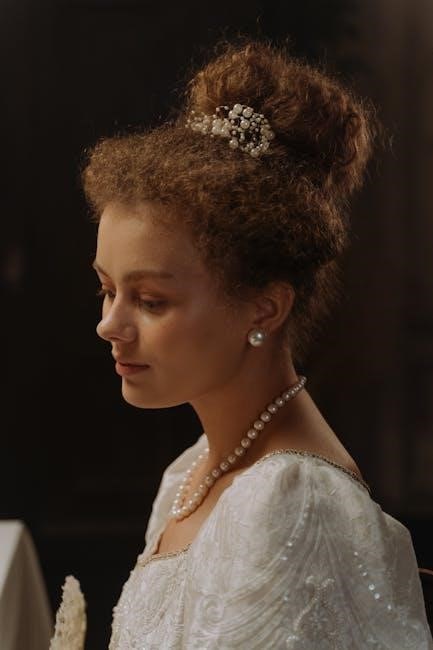Discover the art of identifying vintage and antique jewelry by understanding historical styles, materials, and hallmarks․ This guide helps you unlock the secrets of timeless treasures, blending craftsmanship and history into a fascinating journey through eras․
Understanding the Basics of Vintage and Antique Jewelry
Vintage and antique jewelry are treasured for their historical significance and craftsmanship․ Antique jewelry is typically over 100 years old, while vintage pieces are at least 20–30 years old but less than 100․ Both often feature unique designs, precious materials, and hallmarking techniques that reflect their eras․ Understanding these basics helps in identifying and appreciating the value of each piece, whether it’s a Georgian brooch or a mid-century Art Deco bracelet․ Recognizing materials, styles, and signatures is essential for distinguishing genuine items from reproductions, making this knowledge vital for collectors and enthusiasts alike․
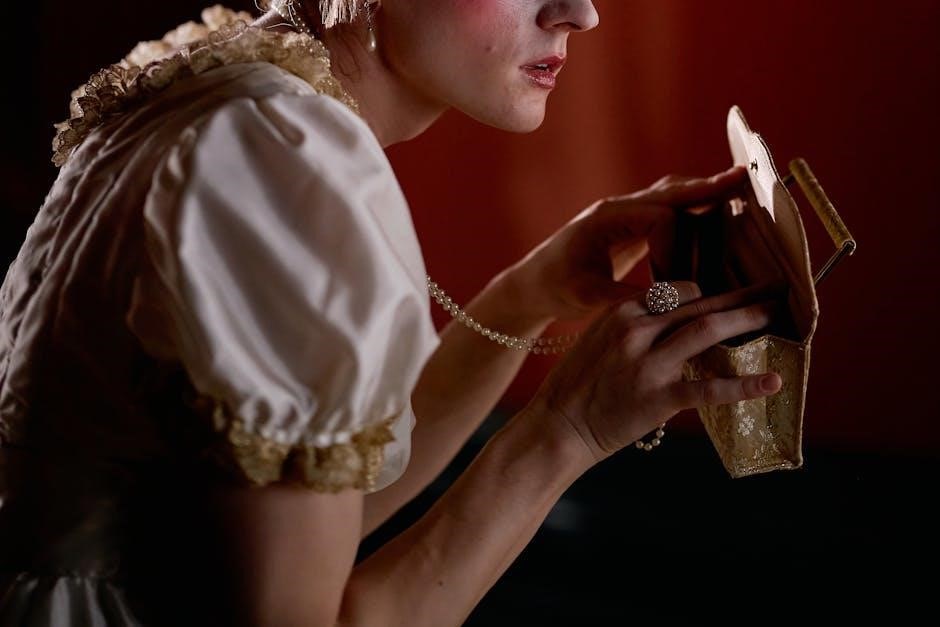
Historical Eras in Jewelry Design
Explore iconic jewelry styles from Georgian elegance to Art Deco modernism, each era reflecting unique craftsmanship and cultural influences that shaped timeless designs․
Georgian Jewelry (1714–1830)
Georgian jewelry, spanning from 1714 to 1830, is characterized by intricate designs often inspired by nature, such as florals and birds․ Pieces frequently feature precious metals like gold and silver, paired with gemstones․ Hallmarks from this era are rare, making identification challenging․ Craftsmanship emphasized hand fabrication, with techniques like enameling and filigree․ These jewels are highly prized for their rarity and historical significance, reflecting the opulence of the Georgian period while showcasing early jewelry-making artistry․
Victorian Jewelry (1837–1901)
Victorian jewelry reflects the era’s emotional and sentimental nature, often featuring mourning pieces with human hair and seed pearls․ Designs were heavily influenced by Queen Victoria’s personal style, with motifs like flowers, snakes, and hearts symbolizing love and mourning․ The Industrial Revolution enabled mass production, introducing more accessible materials like gold, silver, and cameos․ Hallmarks from this period often include date letters, helping in identification․ The Victorian era also saw a rise in intricate detailing and enamel work, blending tradition with innovation, making these pieces highly sought after by collectors for their historical and artistic significance․
Art Nouveau Jewelry (1890–1910)
Art Nouveau jewelry is characterized by flowing, organic designs inspired by nature, featuring sinuous lines and motifs like flowers, vines, and women with long hair․ Popularized by jewelers like René Lalique and Louis Comfort Tiffany, this era emphasized craftsmanship over mass production․ Pieces often incorporated enamel, glass, and semi-precious stones, with a focus on artistic expression․ Hallmarks from this period may include maker’s marks or symbols associated with renowned workshops․ The Art Nouveau style reflected a broader cultural movement, influencing art, architecture, and design, making it a cherished period in jewelry history for its unique aesthetic and creative innovation․
Art Deco and Retro Jewelry (1920–1950)
Art Deco jewelry, popularized in the 1920s to 1940s, features geometric shapes, bold colors, and a sense of modern luxury․ Characterized by clean lines, angular forms, and motifs like chevrons and zigzags, it often incorporates platinum, diamonds, and exotic materials․ Retro jewelry, spanning the 1930s to 1950s, is known for its chunky, three-dimensional designs, frequently adorned with large gemstones․ Influenced by the Roaring Twenties and Hollywood glamour, these pieces reflect a societal shift toward opulence and experimentation․ Designers like Cartier and Van Cleef & Arpels pioneered these styles, making them iconic symbols of their eras․
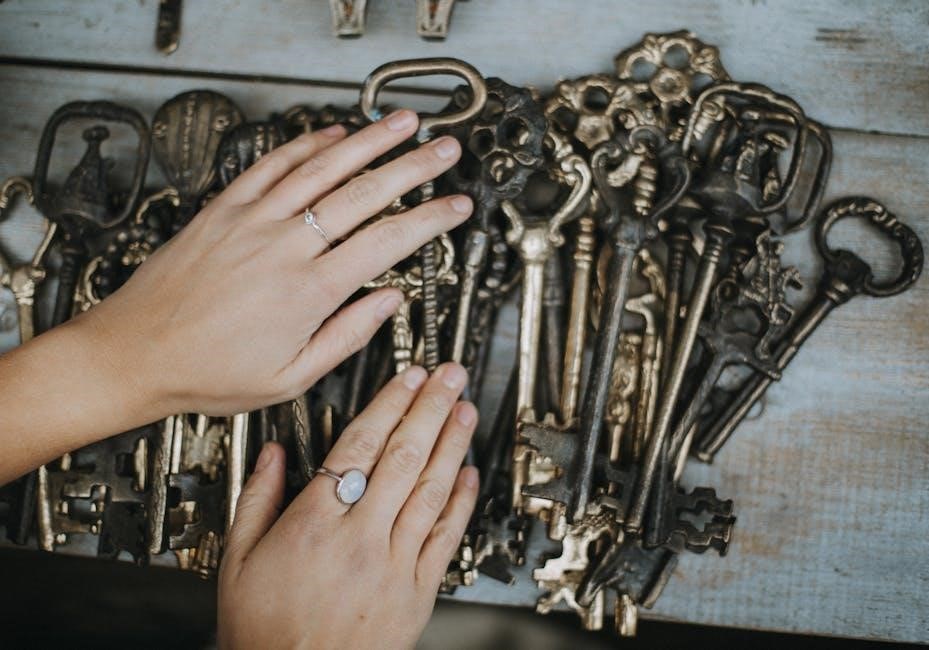
Materials and Craftsmanship
Understanding materials like gold, silver, and platinum, along with gemstones and enameling techniques, is crucial for identifying vintage and antique jewelry, reflecting its historical craftsmanship and value․
Recognizing Precious Metals and Gemstones
Identifying precious metals like gold, silver, and platinum, along with gemstones such as diamonds, pearls, and sapphires, is essential for authenticating vintage and antique jewelry․ These materials often feature hallmarks or stamps indicating their purity, such as “18k” for gold or “925” for sterling silver․ Gemstones may exhibit natural inclusions or characteristic cuts, while synthetic stones can lack these traits․ Understanding the era-specific use of materials, like the prevalence of seed pearls in Victorian jewelry, helps in dating pieces․ Recognizing these elements is crucial for determining the jewelry’s value, age, and authenticity․
Techniques Used in Antique Jewelry Making
Antique jewelry often showcases intricate techniques like hand-forging, enameling, and filigree, reflecting the craftsmanship of earlier eras․ Artisans employed methods such as casting, stamping, and repoussé to create intricate designs․ Victorian pieces frequently feature seed pearls and lockets, while Art Nouveau highlights flowing lines and nature-inspired motifs․ Understanding these techniques aids in identifying authenticity and era, as modern reproduction methods differ․ Recognizing these craftsmanship hallmarks is vital for distinguishing genuine antique jewelry from reproductions, ensuring accurate identification and valuation․
Hallmarks and Signatures
Hallmarks and signatures are crucial for identifying vintage and antique jewelry, revealing its origin, materials, and authenticity․ These markings guide collectors in verifying a piece’s heritage and value․
Understanding Hallmarks and Their Significance
Hallmarks are official stamps or markings on jewelry indicating metal purity and authenticity․ They often include assay marks, symbols, or numbers, verifying the piece’s precious metal content․ These marks vary by region and era, aiding in dating and identifying the jewelry’s origin․ For example, a Portuguese hallmark features a deer and “․800” gold fineness, stamped since 1985․ Hallmarks are essential for collectors, as they confirm authenticity and provide historical context․ However, reproduction pieces may mimic vintage hallmarks, requiring expertise to distinguish genuine marks․ Understanding these symbols is crucial for accurate identification and valuation of antique and vintage jewelry․
Deciphering Maker’s Marks and Signatures
Maker’s marks and signatures are unique identifiers stamped or engraved on jewelry, revealing the creator or brand․ These marks often include initials, logos, or full names, helping trace the piece’s origin and history․ However, signatures can be faint, worn, or even fake, complicating identification․ Researching these marks in reference guides or online databases is essential․ For instance, a hallmark like “Pt 950” indicates platinum purity, while a signature like “Tiffany & Co․” confirms the maker․ Authenticating signatures requires expertise, as reproductions may mimic vintage marks․ Consulting experts or using specialized resources can help verify legitimacy and uncover the story behind the jewelry․
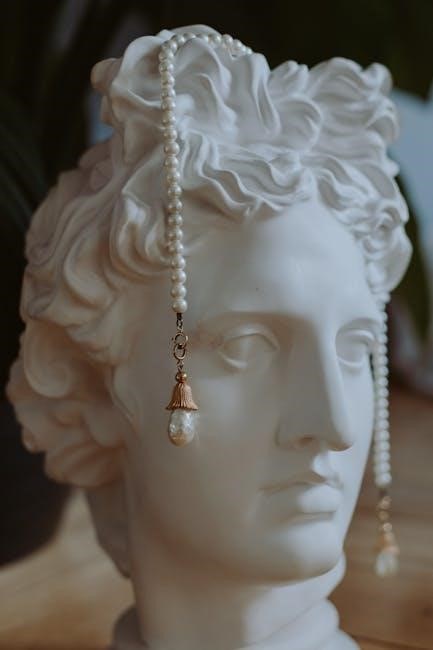
Tools and Resources for Identification
Essential tools include a jeweler’s loupe, reference guides, and online databases․ Utilize hallmark directories, auction catalogs, and expert forums to aid in accurate identification and authentication processes․
Essential Tools for Examining Jewelry
A jeweler’s loupe or magnifying glass is crucial for examining intricate details and hallmarks․ Use a reference guide or hallmark directory to identify signatures and symbols․ Online databases and auction catalogs provide valuable insights into historical pieces․ A digital scale and measuring tools help determine gemstone carats and metal weights․ A clean, well-lit workspace with gloves and soft cloths prevents damage during inspection․ Additionally, UV testers and gemstone identification kits can help distinguish genuine gemstones from reproductions․ These tools collectively aid in accurate identification and authentication of vintage and antique jewelry, ensuring precise evaluation and valuation․
Online Resources and Reference Guides
Utilize online databases like Lang Antique & Estate Jewelry and The Jewelry Loupe for detailed historical insights․ Websites such as Etsy and 1stdibs offer extensive collections for comparison․ Auction platforms like Christie’s and Sotheby’s provide archival records of sold pieces․ Forums and communities, such as The Vintage Jewelry Collector, share expert knowledge and identification tips․ Digital hallmark guides, like Hallmarking, help decipher maker’s marks․ Reverse image search tools can locate similar items, aiding in authentication․ These resources empower collectors to research, authenticate, and value vintage and antique jewelry effectively․
Step-by-Step Identification Process
Examine the piece for telltale signs, such as hallmarks, materials, and craftsmanship․ Research its history and provenance using magnifiers, hallmark guides, and historical records to ensure accuracy․
Examining the Piece for Telltale Signs
Begin by thoroughly inspecting the jewelry under magnification using a jeweler’s loupe or magnifier․ Look for hallmarks, signatures, or stamps that indicate its origin and era․ Check for craftsmanship details like hand-engraving, soldering, or prong settings, which are common in antique pieces․ Examine the metal’s patina and weight, as older jewelry often feels heavier․ Search for signs of aging, such as wear on clasps or earring backs․ Additionally, inspect gemstones for natural inclusions or antique cuts․ Use reverse image searches to compare your piece with similar items online to aid identification․
Researching the Jewelry’s History and Provenance
Uncover the jewelry’s history by researching its style, materials, and hallmarks․ Consult reference guides, online databases, and expert forums to match your findings with known designs․ Check auction records and historical documents to trace its origins․ Examine the piece’s provenance, such as previous owners or historical context, to validate its authenticity․ Use reverse image searches to find similar pieces and compare their backgrounds․ Additionally, consult jewelry historians or appraisers for professional insights, ensuring a well-rounded understanding of the piece’s significance and value․
Common Mistakes to Avoid
Avoid common mistakes like misidentifying vintage as antique, overlooking reproduction pieces, and not researching historical context or provenance to ensure accurate identification․
Misidentifying Vintage vs․ Antique Jewelry
One of the most common errors in jewelry identification is confusing vintage and antique pieces․ Antique jewelry is typically over 100 years old, showcasing historical craftsmanship and rare materials․ Vintage jewelry, while also valuable, is generally from more recent eras, such as the mid-20th century․ Misidentification can lead to incorrect appraisals and a lack of understanding of the piece’s historical significance․ To avoid this, it’s crucial to research the defining characteristics of each era, such as Art Nouveau’s flowing lines or Art Deco’s geometric patterns․ Examining hallmarks, materials, and construction techniques can also provide clarity․ Additionally, consulting reference guides or experts can help ensure accurate classification․ By understanding the distinct features of each period, collectors can better appreciate the heritage and value of their jewelry․
Overlooking Fake or Reproduction Pieces
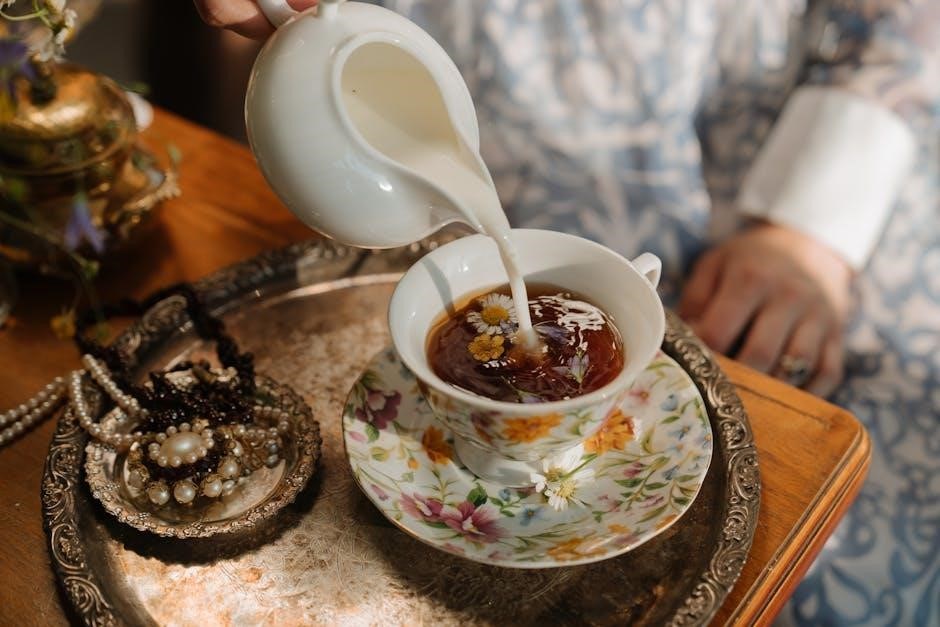
One of the biggest challenges in vintage and antique jewelry identification is distinguishing genuine pieces from reproductions or fakes․ Reproduction jewelry often mimics historical styles but lacks the craftsmanship and materials of the original era․ Overlooking these can lead to misidentification and financial loss․ Key signs of reproductions include modern materials, lack of patina, and inconsistent hallmarks․ Examining the piece under magnification and researching its historical context are essential steps to avoid mistakes․ Additionally, consulting experts or using trusted reference guides can help verify authenticity and ensure accurate identification․ A meticulous approach is crucial to uncovering the truth behind a piece’s origins․
Mastering vintage and antique jewelry identification requires continuous learning and passion․ Seek resources, mentors, and experiences to deepen your knowledge and build a meaningful collection for lifelong enjoyment․
Building Your Knowledge and Collection
Building expertise in vintage and antique jewelry requires dedication and curiosity․ Start by understanding key historical periods and styles, then explore resources like books, online guides, and expert communities․ Engage with collectors, dealers, and historians to gain insights and learn from their experiences․ Invest in essential tools, such as a jeweler’s loupe, to examine pieces closely․ Regularly update your knowledge by staying informed about market trends and new discoveries․ As you grow your collection, focus on authenticity, provenance, and craftsmanship to ensure each piece tells a unique story․ Continuous learning and passion are key to mastering this fascinating field․
